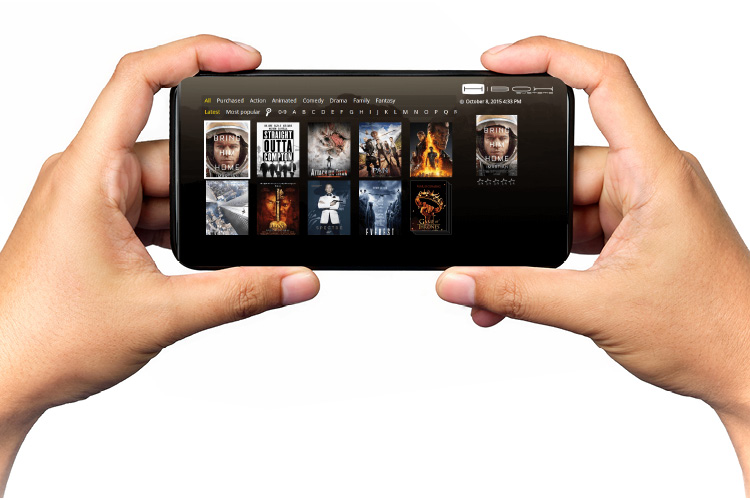Strong double-digit growth has been seen across various segments of OTTs (movies, originals, etc) while audio-streaming apps showed a decline, possibly on account of commuting going down, says a Nielsen research report ‘India Smartphone Behaviour’. According to the report, during the pre-COVID-19 period, the amount of time that consumers spent on smartphones was about 3 hours 22 minutes, and it has increased to 3 hours and 44 minutes in Week 15, which takes it 10% higher.
Daily Time spent on smartphones in Week 5 of COVID-19 disruption is 17.8 billion minutes, up from 16.1 billion minutes in the pre-COVID-19 period. Explaining this, Dolly Jha, Country Leader Nielsen Global Media, South Asia says, “We are pretty much looking at 20% of Internet audiences who are making up our target group which is one lakh plus towns, NCCS ABC, 15-44 age group. And these 20% of Internet audiences are creating 17.8 billion minutes of smartphone usage on a daily basis.”
According to the ‘Impact of COVID-19 on Media Consumption’ report by ZEE5, consumption trends have shown a sharp increase with the rise in increased consumption across all time-bands of the day with 92% increase in movie viewership and 37% increase in consumption of ancillary content, 78% surge in news viewership with growth across languages – Hindi, English & Regional and 200% increase in Kids viewership.
“The daily number of installs coming in organically, that is people searching for the Voot Kids app and installing it, jumped to twice as this lockdown period began. And now, in the last 40-45 day period, it has stabilized to 2.5 times the daily average of pre-lockdown. But more interestingly, subscription to this application has jumped six times on a daily level. The time spent on the platform per user per day is about 90 minutes, both on mobile and on TV,” says Saugato Bhowmik, Business Head, VOOT Kids, a subscription-driven, multi-format learning and infotainment app for children. The platform continued to advertise on digital through performance marketing and did a three-week television campaign across different channels during this period.
EXPERIMENTS WITH CONTENT
An advertising-based video on demand (AVOD) platform, MX Player, has seen a huge surge in user base and engagement time with its wide library of content, strategic partnerships with GECs and live television and new channels. “We’ve done a lot of partnerships with movies, dubbed Hollywood movies, which are doing extremely well but what we did really well was our digital first web shows that we both produced or co-produced or actually did partnerships with where we have the exclusive right,” says Viraj Jit Singh, SVP & Head-Revenue, MX Player. “Time spent on gaming is even higher than time spent on video for us,” adds Singh. Times Internet-owned MX Player had announced in February that it had added in-app gaming features on the platform.
According to Mindshare India and Vidooly report, YouTube has seen a 20.5% surge in subscriber-base in a span of 45 days of the COVID-19 disruption. Genre-specific observations from the report indicate a 120% spike in the number of uploads in the ‘Education’ category post lockdown. The ‘Music’ genre, majorly short-form content, has seen a 9% decline in consumption during the lockdown period, which also indicates the shift in the consumer behaviour towards long form content. An increase in time at the consumer’s disposal is cited as the reason for this shift. Certain genres that have seen a significant increase in viewership are Food & Recipe (52%), Gaming (23%) and Information (42%).
Even regional OTT platforms are seeing surge in content consumption, the Bengali language Hoichoi being one of them. Hoichoi has reportedly seen a major spike in growth in its 35+ age group users, who have now become one of the top demographic segments of Hoichoi.
ADVERTISING ON DIGITAL
“On digital, programmatic advertising has seen a drop across all categories but on direct sale, where we are going to clients and agencies and pitching, we have seen a growth over the last three months and we are still seeing growth,” says Viraj Jit Singh. “Yes, my brand count has reduced, my RO value size has increased because there are certain categories that are organically wanting to advertise more. For example, media and entertainment platforms, largely other OTT and other social media platforms are leveraging us as we’ve a very unique user base different from all the others,” he adds.
Other categories that are spending large sums on OTT platforms are gaming services and essential goods brands.
“OTT platforms like Netflix and Amazon Prime are now among the Top 10 advertisers on movie channels, clearly trying to woo audiences from TV to online,” says Sunil Lulla, Chief Executive Officer, BARC India.





.jpg)
.jpg)
.jpg)















